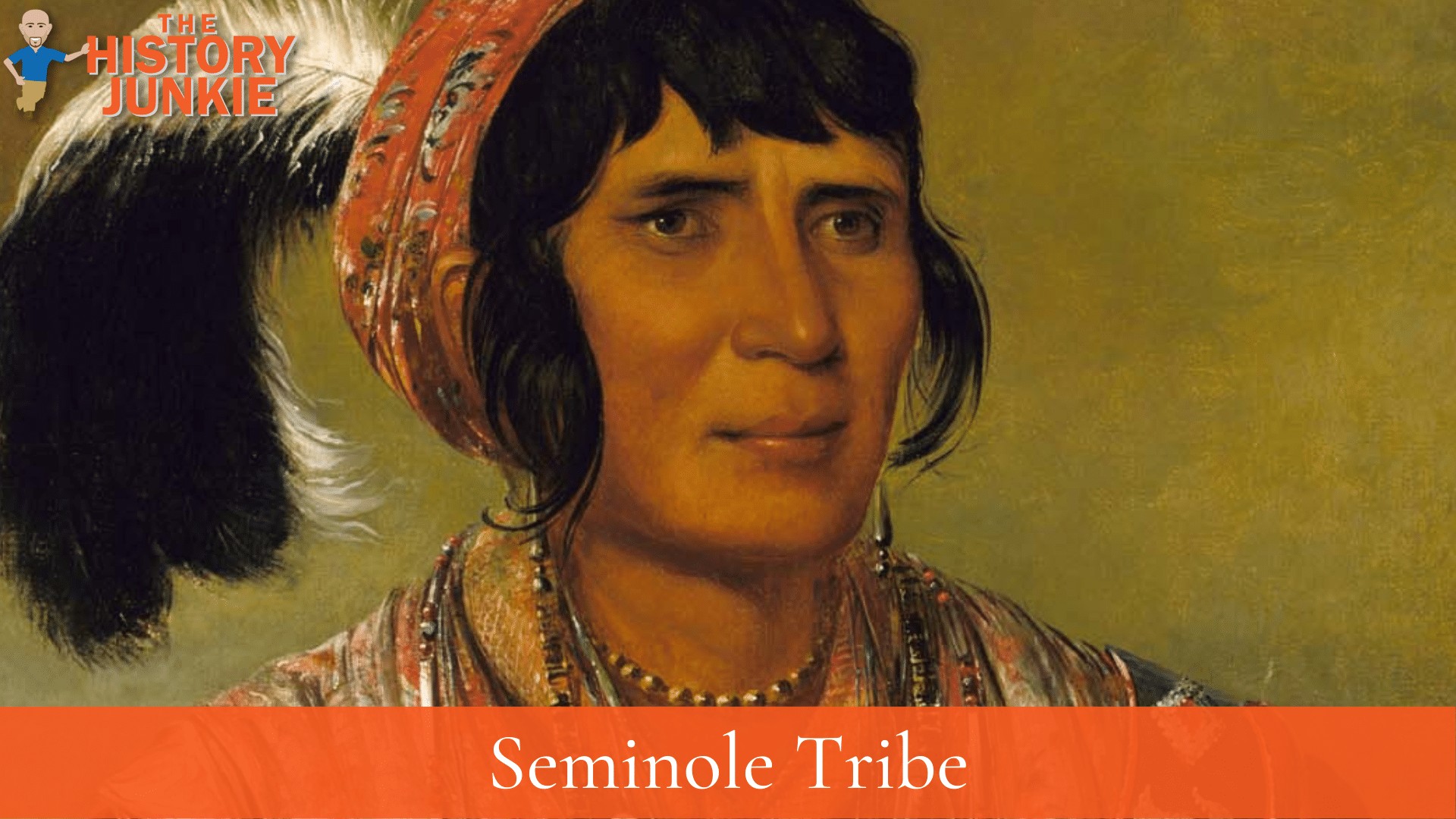
Jump to:
#1. The Seminole Tribe Migrated to Florida
The Seminole Tribe is a Southeast Tribe that probably lived around South Carolina/Georgia when Christopher Columbus discovered the New World. However, European Colonization would take a toll on many tribes in the region, including the Seminole Tribe.
Native Americans in Florida had been devastated by European disease and the constant intrusion from the Spanish Conquistadors. The population began to drop significantly, which allowed for other tribes to migrate down into Florida.
As Spanish power began to decline in the 17th and 18th centuries, it allowed the Seminole tribe to settle comfortably within the Everglades. The environment kept them protected from outsiders.
Florida eventually changed hands, and America would purchase it from Spain. The Seminoles would eventually be forced to move to Oklahoma, with only a handful staying in Florida.
#2. The Seminoles Were Originally Creek Indians
The Seminole tribe did not always exist. They were part of the Creek Tribe, who split from them and migrated into Florida.
The word Seminole probably comes from the Creek word simanó-li, which means separatist. The tribe had split from the Creek and, by the time of the American Revolution, was known as the Seminole Tribe.
They have always been seen as a separate tribe since the founding of the United States and are now recognized in Florida and Oklahoma.
#3. The Tribe Was Friendly To Runaway Slaves
It was not uncommon for runaway slaves to merge into a Native American tribe, especially after European disease had wiped out much of the population. However, the Seminole tribe was especially friendly towards slaves.
The Seminoles were located in Spanish Florida. Florida was not an original colony and, therefore, did not participate in the Revolutionary War, with the exception of a few skirmishes.
Since Florida was technically out of the jurisdiction of the United States, it was common for slaves to escape their bondage by fleeing south into Florida, where they would be welcomed by the Seminole tribe.
This caused many issues for southern planters and resulted in the United States military sending incursions into Spanish territory to catch former slaves and bring them back.
These runaways were called Maroons or Black Seminoles. They were celebrated for their tenacity during the Seminole Wars.
#4. The Seminoles Fought Three Wars With The United States

Being located on the southern border of the new nation caused problems for the United States. The Seminoles would often send raids against settlers who were encroaching on the tribe's land, and they did not mind harboring runaway slaves.
This would lead to a series of wars known as the Seminole Wars.
First Seminole War (1817 - 1818): This would be the war that forced Spain to cede Florida to the United States. Andrew Jackson led his men into Florida and had a series of victories, which included the capture of Pensacola.
Second Seminole War (1835 - 1842): This would be the bloodiest of the Seminole Wars. President Andrew Jackson had signed the Indian Removal Act and wanted to remove all tribes west of the Mississippi. The Seminole Tribe led by Osceola refused to move. They led many successful raids on the military, killing many and forcing many retreats. Eventually, Osceola was captured, and the United States saw success but took heavy casualties. They forced all but a few Seminoles west.
Third Seminole War (1855 - 1858): This was the smallest conflict. The United States wanted to remove the rest of the Seminoles that had stayed behind. There was little bloodshed, and the United States ended up paying most of them to move. An estimated 200 to 500 Seminoles in small family bands still refused to leave and retreated deep into the Everglades and the Big Cypress Swamp to live on land considered unsuitable by American settlers.
#5. The Seminole Tribe of Florida Is Now Thriving
The Seminoles have a long history of surviving. They survived three wars, and those that stayed behind after the Third Seminole War survived the Everglades.
Eventually, American relations got better, and the Seminole Tribe was able to coexist. Reparations were given to most of the tribes in the United States, and they were allowed to control casinos.
They have developed more extensive hotels and related resorts for gaming on some of their reservations. In 2007, the Tribe bought the Hard Rock Cafe franchise for $965 million, including 124 Hard Rock Cafes, four Hard Rock Hotels, two Hard Rock Hotels and Casino Hotels, and two Hard Rock Live! concert venues, and stakes in three unbranded hotels.
Since then, they established the Hard Rock Cafe brand in their hotels and casinos. They now have a total of seven casinos.
They are currently trying to bring sports gambling into the state of Florida.
